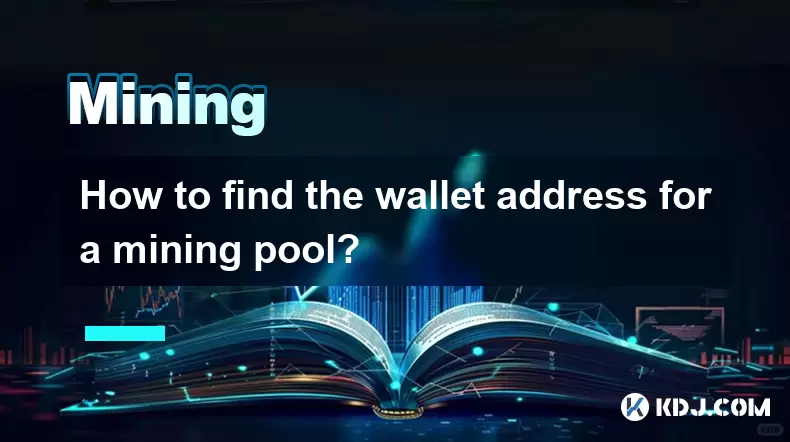-
 Bitcoin
Bitcoin $118,209.3536
1.16% -
 Ethereum
Ethereum $3,151.7546
5.98% -
 XRP
XRP $2.9277
2.35% -
 Tether USDt
Tether USDt $1.0000
0.00% -
 BNB
BNB $689.7099
1.26% -
 Solana
Solana $163.4270
1.91% -
 USDC
USDC $1.0000
0.02% -
 Dogecoin
Dogecoin $0.1983
3.74% -
 TRON
TRON $0.3008
0.51% -
 Cardano
Cardano $0.7435
2.86% -
 Hyperliquid
Hyperliquid $47.6547
-0.48% -
 Stellar
Stellar $0.4625
2.79% -
 Sui
Sui $3.9921
2.71% -
 Chainlink
Chainlink $16.0608
4.23% -
 Hedera
Hedera $0.2348
1.56% -
 Bitcoin Cash
Bitcoin Cash $496.6985
1.25% -
 Avalanche
Avalanche $21.9038
5.41% -
 UNUS SED LEO
UNUS SED LEO $8.8356
-1.88% -
 Shiba Inu
Shiba Inu $0.0...01364
5.31% -
 Toncoin
Toncoin $3.1102
4.35% -
 Litecoin
Litecoin $95.9756
3.59% -
 Polkadot
Polkadot $4.0925
5.78% -
 Monero
Monero $333.7622
-1.44% -
 Uniswap
Uniswap $9.1968
2.25% -
 Bitget Token
Bitget Token $4.6378
6.23% -
 Pepe
Pepe $0.0...01282
6.77% -
 Dai
Dai $1.0002
0.03% -
 Ethena USDe
Ethena USDe $1.0005
0.00% -
 Aave
Aave $329.9143
4.49% -
 Bittensor
Bittensor $441.4995
6.89%
How to find the wallet address for a mining pool?
A mining pool wallet address ensures your share of block rewards is sent to your cryptocurrency wallet.
Jul 16, 2025 at 08:35 am

Understanding the Concept of a Mining Pool Wallet Address
In the world of cryptocurrency mining, a mining pool refers to a group of miners who combine their computational resources over a network to increase the probability of successfully mining a block. When a block is mined successfully, the reward is distributed among the participants based on their contributed hash power. However, for these rewards to be credited, each miner must provide a valid wallet address.
A wallet address is a unique alphanumeric identifier that represents a destination on the blockchain where funds can be sent or received. In the context of mining pools, this address ensures that your share of the block reward is directed to your wallet. Therefore, understanding how to locate or generate this address is essential for anyone participating in pooled mining operations.
Steps to Locate Your Wallet Address from a Cryptocurrency Wallet
Before you can input your wallet address into a mining pool platform, you need to obtain it from your digital wallet. The process varies slightly depending on whether you're using a software wallet (like Electrum or Litecoin Core), a mobile wallet (such as Trust Wallet or Litecoin Wallet), or a hardware wallet (like Ledger or Trezor). Below are detailed steps:
- Open your wallet application and ensure it is fully synchronized with the relevant blockchain.
- Navigate to the Receive section within the wallet interface.
- You will see a field labeled Address, which contains your public wallet address. This usually starts with a prefix like "1", "3", or "bc1" for Bitcoin-based coins.
- Some wallets allow you to generate multiple addresses. Ensure you are using one that hasn't been used before for maximum privacy.
- Copy the full string of characters without any spaces or special symbols.
Always double-check the copied address to avoid errors, as even a single incorrect character can result in lost funds.
Configuring Your Mining Pool Account with the Wallet Address
Once you have your wallet address, the next step involves integrating it into your mining pool account. Most mining pools require users to register an account and configure worker settings. Here's how:
- Visit the official website of your chosen mining pool (e.g., Slush Pool, F2Pool, or Antpool).
- Create an account by providing an email and setting up a strong password.
- After logging in, navigate to the Worker Settings or Miner Configuration section.
- There should be a field labeled Wallet Address or Payout Address.
- Paste your previously copied wallet address into this field.
- Save the changes and wait for the system to validate the address format.
Some pools may also ask for a worker name and password, which are typically set by the user for internal tracking purposes.
Verifying the Correctness of the Entered Wallet Address
Entering an incorrect wallet address in a mining pool can lead to irreversible loss of earnings. Hence, verification is crucial. Here’s how you can ensure accuracy:
- Revisit your wallet app and compare the address you entered in the mining pool with the one displayed under the Receive tab.
- Use a block explorer specific to the cryptocurrency you’re mining (e.g., blockchair.com for Litecoin, blockstream.info for Bitcoin).
- Enter your wallet address into the search bar of the explorer. If it returns a valid balance or transaction history, it confirms the address is real and active.
- Some mining pools offer a test payout feature that sends a small amount of cryptocurrency to verify the address works.
Avoid relying solely on auto-fill features or saved addresses unless you're certain they are correct.
Best Practices for Managing Multiple Wallet Addresses Across Mining Pools
If you mine different cryptocurrencies or use multiple mining pools simultaneously, managing various wallet addresses becomes necessary. Here are some best practices:
- Maintain a spreadsheet or secure document listing all wallet addresses, associated cryptocurrencies, and corresponding mining pools.
- Use labeling features within your wallet app to assign names like “BTC-MiningPool1” or “LTC-PoolX” to each address for easier identification.
- Regularly audit your payout settings across all mining platforms to ensure no outdated or incorrect addresses remain active.
- Consider using cold storage solutions for long-term holdings, but keep a separate hot wallet for daily mining payouts to maintain accessibility.
By following these guidelines, you reduce the risk of misconfigurations and enhance the security of your mining rewards.
Frequently Asked Questions
Q: Can I change my wallet address after I’ve started mining?
Yes, most mining pools allow users to update their wallet address at any time through the account settings or payout configuration section. However, ensure that the new address is verified and belongs to you before making changes.
Q: What happens if I enter a wrong wallet address in a mining pool?
If an incorrect wallet address is entered, your mining rewards may be sent to that invalid or unintended address. Since blockchain transactions are irreversible, recovering funds sent to an incorrect address is nearly impossible.
Q: Do mining pools support SegWit wallet addresses?
Many modern mining pools do support SegWit (Segregated Witness) addresses, especially for Bitcoin and Litecoin. It’s important to check the pool’s documentation or support section to confirm compatibility before entering a SegWit address.
Q: Is it safe to use the same wallet address across multiple mining pools?
Using the same wallet address across different mining pools is technically safe and often recommended for consolidating earnings. However, for privacy reasons, some users prefer generating unique addresses for each pool or session.
Disclaimer:info@kdj.com
The information provided is not trading advice. kdj.com does not assume any responsibility for any investments made based on the information provided in this article. Cryptocurrencies are highly volatile and it is highly recommended that you invest with caution after thorough research!
If you believe that the content used on this website infringes your copyright, please contact us immediately (info@kdj.com) and we will delete it promptly.
- Crypto ROI Revolution: Is BFX the Next Big Thing?
- 2025-07-16 21:30:13
- Dogecoin, HBAR, and Partnerships: A Tale of Memes vs. Utility
- 2025-07-16 21:30:13
- Cha-Ching! That £2 Coin Could Be Worth a Mint!
- 2025-07-16 22:10:12
- Meme Coin Mania Meets Crypto Payroll & Burger Bites: A New York Minute on the Latest Trends
- 2025-07-16 22:10:13
- China Gold Market: Investment and Focus in 2025
- 2025-07-16 22:15:13
- FxWirePro: Token Unlock Tsunami – Navigating the ARBUSD Waters
- 2025-07-16 22:15:13
Related knowledge

How are crypto mining profits taxed?
Jul 14,2025 at 12:28am
Understanding Cryptocurrency Mining and TaxationCryptocurrency mining involves validating transactions on a blockchain network and earning rewards in ...

How to keep a mining rig cool
Jul 12,2025 at 01:42pm
Understanding the Importance of Cooling in Mining RigsCryptocurrency mining is an intensive process that places heavy demand on hardware components, p...

How to mine crypto on a gaming PC
Jul 16,2025 at 12:00pm
What is Crypto Mining on a Gaming PC?Crypto mining involves using your computer's processing power to validate transactions on a blockchain network. A...

How to set up a crypto miner
Jul 16,2025 at 09:14am
Understanding Ethereum Gas Fees: What Are They and How Do They Work?Ethereum gas fees are a fundamental aspect of the network, representing the cost r...

Can you mine crypto on a laptop?
Jul 16,2025 at 02:21am
Is It Feasible to Mine Cryptocurrency on a Laptop?Mining cryptocurrency on a laptop is technically possible, but feasibility depends heavily on the ha...

Is crypto mining worth it?
Jul 16,2025 at 01:21am
Understanding the Basics of Crypto MiningCrypto mining refers to the process of validating transactions on a blockchain network by solving complex mat...

How are crypto mining profits taxed?
Jul 14,2025 at 12:28am
Understanding Cryptocurrency Mining and TaxationCryptocurrency mining involves validating transactions on a blockchain network and earning rewards in ...

How to keep a mining rig cool
Jul 12,2025 at 01:42pm
Understanding the Importance of Cooling in Mining RigsCryptocurrency mining is an intensive process that places heavy demand on hardware components, p...

How to mine crypto on a gaming PC
Jul 16,2025 at 12:00pm
What is Crypto Mining on a Gaming PC?Crypto mining involves using your computer's processing power to validate transactions on a blockchain network. A...

How to set up a crypto miner
Jul 16,2025 at 09:14am
Understanding Ethereum Gas Fees: What Are They and How Do They Work?Ethereum gas fees are a fundamental aspect of the network, representing the cost r...

Can you mine crypto on a laptop?
Jul 16,2025 at 02:21am
Is It Feasible to Mine Cryptocurrency on a Laptop?Mining cryptocurrency on a laptop is technically possible, but feasibility depends heavily on the ha...

Is crypto mining worth it?
Jul 16,2025 at 01:21am
Understanding the Basics of Crypto MiningCrypto mining refers to the process of validating transactions on a blockchain network by solving complex mat...
See all articles

























































































